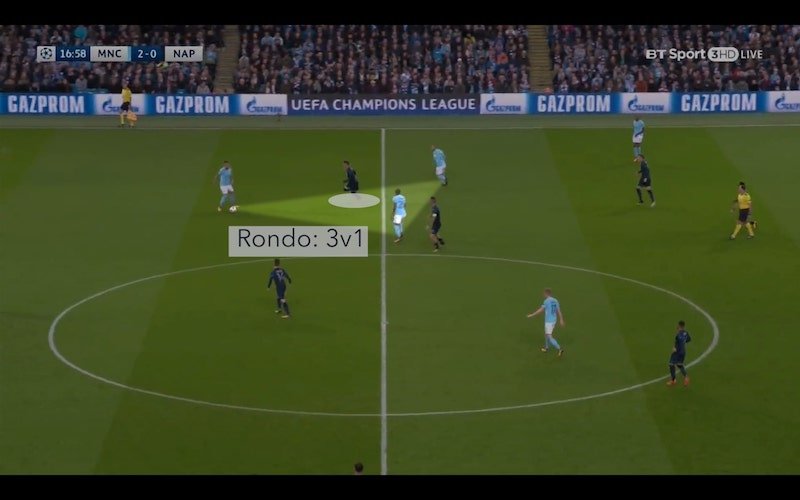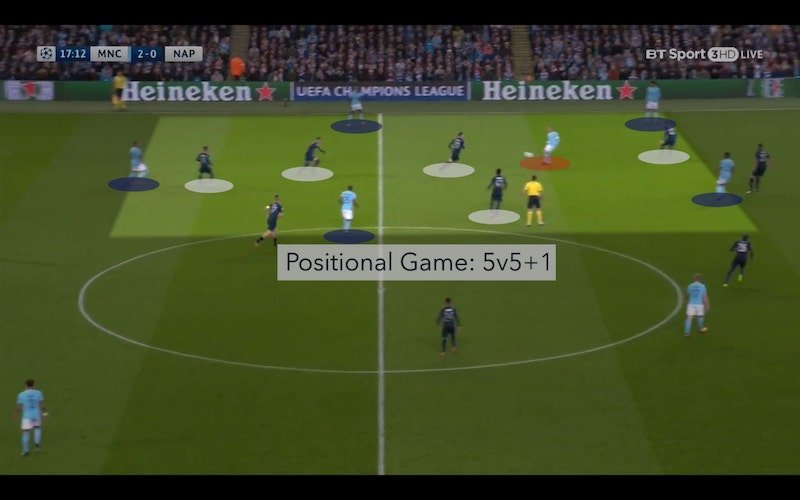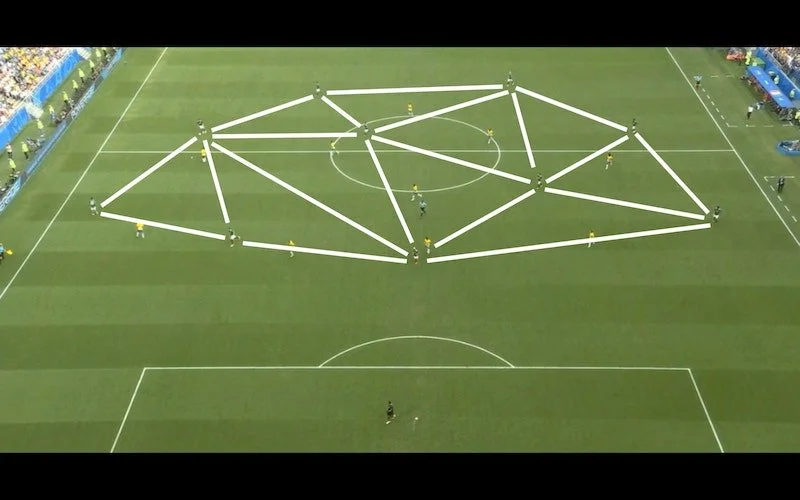Fractalled Football
“Although the scenario changes, the situation is always the same.”
Nature is efficient, and one of nature’s most impressive works is the fractal. It combines efficiency with beauty, by utilising curves and patterns and identical but smaller curves and patterns to create structures for all sorts of purposes and objectives in the natural world.
Self-similarity is the basis of fractals. This essentially means the whole has the same shape as one or more of the parts, in reference to the structure of an object. A great example is the Sierpinski triangle which has triangles within triangles within triangles and so on for infinity.
Even if you are unfamiliar with the term fractal, you have most certainly come across fractal patterns in your life. In fact, you come across them everyday. Your body is functioning right now thanks to the ingenuity of fractal patterns.
Efficiency is nature’s objective when transporting nutrients, energy, or information to and fro. Because of this, fractal pathways are seen in rivers, root systems, lighting strikes, the respiratory system, the circulatory system and the nervous system, just to name a few.





Why are fractal patterns so efficient? Dr. David Pincus, psychologist and expert in the fields of complexity and non-linear sciences, serves us with the following explanation,
‘Essentially, fractal systems have many opportunities for growth, change and re-organization. Yet they also are very robust. They maintain their coherence; they hold together well, even under tough circumstances. They are balanced in this respect, between order and chaos. They are simple, yet also very complex.’





Speaking in terms of football, the highest functioning teams create structures which follow these properties. We want them be robust and occupy the entire available space. They need to be able to change and re-organise in relation to the demands of the game. The links or interactions between players create the structure. These interactions are defined in space by distances and angles which create patterned shapes. The more efficient these shapes, the better they can react to the order and chaos the game provides. In the words of Dr. Pincus, ‘they are simple, yet also very complex.’
Pincus continues, ‘The term "self-organized" is often added because systems tend to become fractal on their own, simply by putting a lot of system components together and allowing them to exchange information. Think of a party. All you need to do is come up with enough people at the same place and time and they will start to form complex patterns of connection with one another.’
As you can imagine, all of these concepts are present in our everyday life, including football. For example, a group of graduate students from the University of Yamanashi conducted a series of studies by plotting the movements of all 22 players and the ball in several matches which showed elements of self-similarity throughout a match.
They concluded ‘The multiplayer dynamics of a football game were analysed to unveil self-similarities in the time evolution of player and ball positioning.’ In short, they noticed the same movements occurred over and over throughout the course of a match. These movements repeated themselves to indicate football follows temporal self-similarity.
F.C. Barcelona U10 coach, Oscar Jorquera, consistently reiterates the following phrase to the players he’s coaching, “Although the scenario changes, the situation is always the same.” He is of course alluding to this self-similarity throughout a match. He is referring to the repetition of small number situations (e.g. 2v1, 2v2, 3v1, 4v2, etc) we see in a game. The scenario perhaps is different. Maybe we see a 2v1 in the wide channel in the defensive third or maybe it occurs in the middle channel between the defensive centre midfielder and attacking midfielder attempting to progress through the midfield.



However, he is not only referring to the temporal self-similarity but the space or structural self-similarity. Similarly to the fractal patterns created in a root systems or the infinite triangles of a Sierpinski Triangle, the small triangles or diamonds seen in a team formation can be seen over and over throughout the pitch.
Watch a football match trying to identify the shapes created. See the triangles within triangles and the diamonds within diamonds. They are created by the constant self-organisation of players. They adjust and readjust their positioning to maintain these shapes. Their slight movements towards the right/left/forward/backward create efficient angles and distances to keep their structural integrity. Continuous scanning allows them to move in accordance to their teammates, the ball and the opponent in no particular order. This self-organisation is as natural as our rivers or root systems. We need to bring forth this natural aspect of the game in every training session.
Every training session La Masia’s Oscar Jorquera runs is rooted in self-similarity and self-organisation. His sessions bring out simplified game situations in order for the game to become natural patterned fractal movements. He gives his players the situations every day and guides them to move in relation to their environment and to learn to organise themselves based on the patterns he provides.
We may start by introducing players to 4v2 rondos where players are continuously readjusting their body position and positioning to maintain their diamond shape in relation to teammates to efficiently move the ball from one side of the square to the other by finding the quickest and most efficient way to do so. This repetition of adjustment to the ball’s movement, teammate’s movement, and defender’s movement is the pattern that they will begin to recognise when they are in a larger scaled game with more variables. Being familiar with this situation prepares them cognitively for what is to come.
Now, introduce the player to a larger fractal within the game: 3v3+4. Players are still using the patterns they are comfortable with from the 4v2 rondo to read the cues given to them by each variable of the game (ball, teammates, defenders, etc.). They are now adjusting themselves to be efficient with the ball’s movement from one side to another, all the while keeping those precious diamonds and triangles from our scaled down fractalled rondos. The situation is the same but now the scenario is different.
Add another layer to our Sierpinski triangle training session. Add more players, which means more variables (cognitively, it’s exponentially more difficult). Add goals, which change the space and objective. 8v8+2 towards goals. The scenario is different but the situation is not, and will not ever change. Those invaluable diamonds and triangles are still there, hidden away, but with the correct pattern recognition players will find them. They will readjust their positioning and body position constantly to efficiently move the ball from one point to another. They will keep the ball like they so often do in 4v2 rondos. They will see the tiny fractal shapes within the larger fractal within the game. We train the situation so diligently that players are unfazed by different scenarios presented to them. This is learning through pattern recognition. This is learning the fractals of the game.
From beginning to end, these shapes, patterns, movements, angles, and distances are visible throughout any training session. Implicitly or explicitly. They are always present. They are the language the players begin to speak and understand. Together they learn to act and react. Adjust and readjust. Position and re-position. With the help of games which incorporate all complex behaviours of a match in smaller fractal-like resemblance. Just like the infinite Sierpinski triangle, shapes within shapes.
Oscar Jorquera creates the same situation to be solved in one scenario after another after another. Self-similarity within a training session and that self-similarity is seen in a match on Saturday.
Young players learn fast but forget faster. For true, deep learning, they require repetition so what better repetition than that of situations. Just like nature repeats itself for efficiency, we repeat training situations for efficient learning.
We like repetition. We like patterns. We like nature’s beautiful fractal shapes. The rhythm of crashing waves on a beach. We all tap along to our favourite song’s repetitive rhythm. We have designed our world to mimic the efficacy of nature’s fractals in our highways, architecture, and networks. Our brains love to identify patterns. That’s how we learn. So why wouldn’t we use this innately human behaviour to learn our favourite sport.
“It’s full of symmetries and asymmetries, patterns that form and dissolve, only to coalesce in new formations and groupings. Out of these geometries, participants emerge, alone or in twos and threes, collaborating, pairing off, enjoying these moments.”





